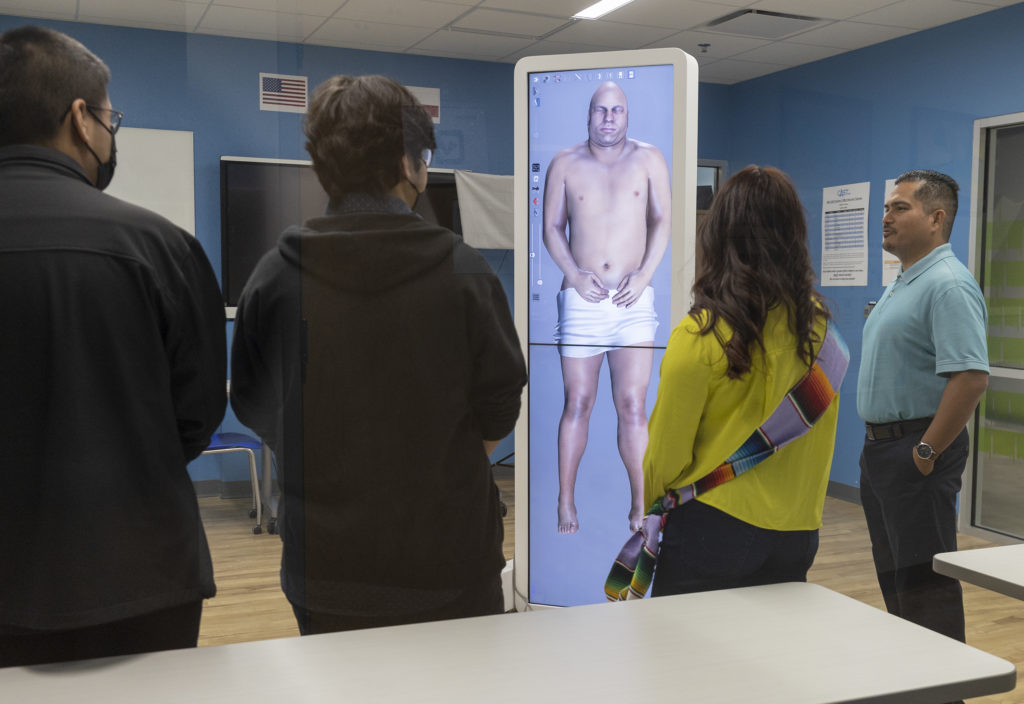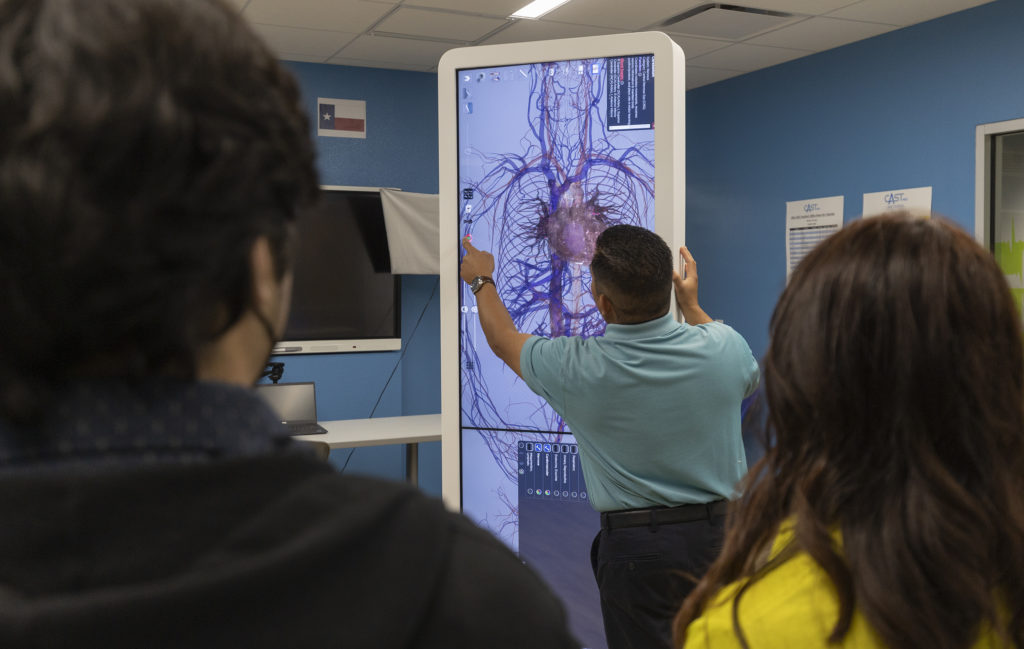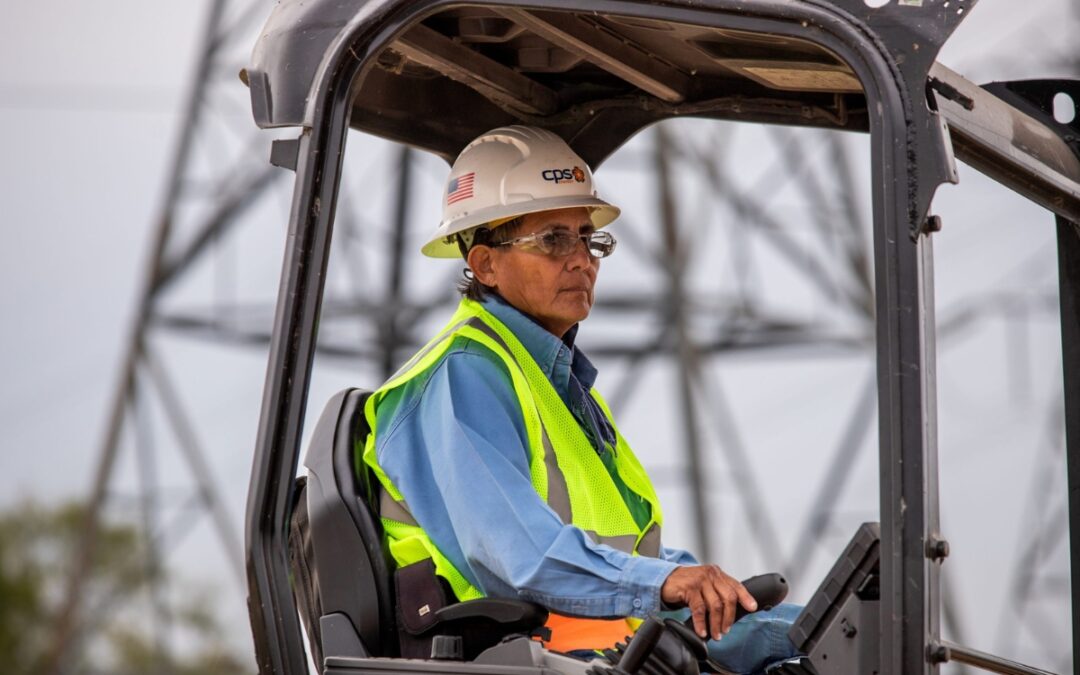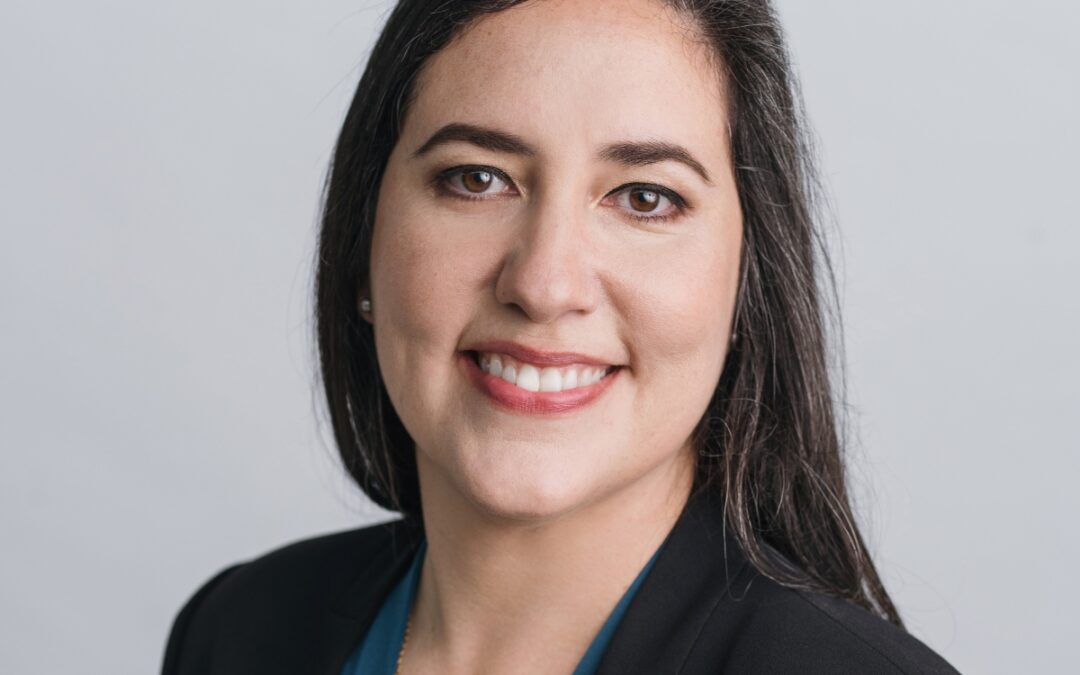How can San Antonio build the STEM workforce it desperately needs?
By Brooke Crum and Lindsey Carnett – San Antonio Report
Photos by Bria Woods – San Antonio Report
Three years ago, San Antonio ninth-grader Audrie Torres would not have been able to attend a medical magnet high schoolanywhereon the South Side that would set her up for a career path in health care.
The 15-year-old would have had to travel downtown or tothe North Side to attend a similar school — not an option for many in her situation.
“Being more toward the South Side of San Antonio, many of us students struggle. We’re lower income,” Audrie, 15, said. “Many high schools don’t offer this many opportunities.”
CAST Med High School is one of five high schools that make up the Centers for Applied Science and Technology Network, all focused on careers in STEM-related fields.
As a nonprofit, the CAST School Networkoperates its schoolswithin four independent school districts: East Central, Northside, San Antonio and Southwest. Students from across the city can apply to the tuition-free schools, which each serve several hundred students.
The first CAST schoolopened in 2017 — CAST Tech High — on the former campus of Fox Tech High School downtown,and was designed to serve as an entry point for students into these high-demand, high-wage fields, said Jeanne Russell, CAST Network’s executive director.
To put into context just how in-demand these jobs are,Workforce Solutions Alamo, which researches workforce trends and connects job-seekers to open positions, reports that local employers are looking to hire for jobs related to science, technology, engineering and math (STEM), more than any other career paths they measure.
The high-growth occupationstheir analysts have identified run the gamut and include jobs in finance, health care,cybersecurity, aerospace and manufacturing. Not all ofthese jobs require a college education, but most need some amount of specialized training.
Building a pipeline from scratch
It was always a challenge to fill STEM roles, say many local employers, and the current ultra-tight job market has made it even more difficult.
For example, CPS Energy, which employs 3,000 peopleacross the city, is struggling to hire engineers, data scientists, accounting professionals, cybersecurity and IT specialists, said Lisa Lewis, the utility’s chief administrative officer.
And San Antonio businesses aren’t just competing locally anymore.In a world changed by the pandemic, CPS Energy is now competing with companies like Apple and Amazon, since many workers can now log in from home, Lewis said.
Plus, prospective employees can be even more choosy in this market: Worker shortages across the country have made finding the right fit for any role more challenging than in the past. And for technical jobs that require technical skills, multiply that.
In San Antonio, CAST schools are trying to create a local pipeline of young people prepared to fill these sought-after roles.
“When we created CAST, superintendents and business leaders came together, and they said, particularly in parts of our city, nobody is drawing those connections for students,” Russell said. “We need to build much more intentional bridges.”
For example, many high school students already work, so schools should be connecting them to jobs in the fields they’re interested in pursuing after high school, she said. That way, students develop networks and connections that will help them even if they don’t go to college.
From the classroom to the workforce
Connecting San Antonio students from their K-12 schools into STEM fields requires making sure educators, business leaders and entrepreneurs are working together, said Will Garrett, vice president of talent and technology development and integration at Port San Antonio.
Built on the 1,900-acre site of the former Kelly Air Force Base, today Port San Antonio boasts more than 80 companies that employ more than 12,000 people,largely in STEM fields like advanced manufacturing, cybersecurity, global logistics, aerospace and defense.
San Antonio has made solid strides toward developing more STEM-focused curriculums, Garrett said, from middle schoolsto the local community college system and even at local four-year universities. But there’s an “inherent bureaucracy” in academic institutions that can make it difficult for them to keep up with the pace of technology and change in these high-demand fields, he noted.
Of course, no educational effort will matter if young people don’t feel like San Antonio is a place where they can find afulfilling life and career. That is a messaging challenge, Garrett said.
CAST is an amazing example of a program that is “launching kids out to the best of the best universities,” he said. “But how do we ensure that before they leave, they understand there’s a career for them here when they’re done?”
Today’s reality is that more than half of San Antonio high school graduates — 53% — don’t pursue a higher education, according to SA2020. By only focusing on college graduates, Russell said, “we’re missing the majority of our young people. Let’s assume that some of them are not going to go to [college], and let’s plan for that.”
It’s critical to build these schools realistically, Russell said, not for “this sort of mystical middle class, four-year, living-in-a-dorm scenario that isn’t really true.”
A great opportunity, but for the very few
Given the opportunities that exist at CAST schools, it’s no surprise how hard students who are interested in them will work just to get to class.
Ninth-grader Jesus Lopez chose to attend CAST Med because he wants to become an anesthesiologist. Every day, he carpools with a friend just to get to the bus line that actually takes him to school.
Every CAST campus employs a partnership coordinator whose job is to work withindustry leaders and nonprofits to create opportunities for students, acting as an open door to get experienced workers into schools andexpose students to careers that may not require a college degree.
Making sure CAST students get those opportunities is verylabor-intensive, Russell acknowledged, “but that’s the intentionality you have to have.”
In April, the graduating class of roughly 150 seniors from the CAST network met with 19 local employers for the opportunity to get a job or internship, fulfilling the CAST promise that every student will have a job interview prior to graduation.
Collectively, these students have earned more than 200 industry-recognized certificates that verify competence in a particular skill set, and have gained experience in coding, logistics, robotics and more.
“CAST Med really does make you feel seen as a learner instead of just a random name on the attendance sheet being checked off,” Audriesaid.”They know my skills, and they know my capabilities.”
She and Jesus,with the encouragement and guidance of staff, recently applied to the Max and Minnie Tomerlin Voelcker Fund Biomedical Research Academy at UT Health San Antonio, a three-year biomedicalresearch college preparatory program.
But theyare among the lucky few who are firmly within a supportive pipeline to high-demand, well-paying STEM careers, and will likely have their pick of jobs.
Just 2,000 students are enrolled in the CAST high schools, however, out of roughly 101,000 high school-aged students throughout Bexar County.
The hope is that CAST schoolswill act as “idea incubators” for curriculum and programming that can be implemented in other schools. But that has provendifficult, given that there are no incentives for school districts to create these sorts of opportunities for students.
And though lessons have been learned about what works in San Antonio, there is still a lot of work to be done.
“Will we ever be there?” Garrett asked. “I think the work will continue to be cut out for us to continue to adapt education, training and hands-on learning to the jobs that are coming a year from now, three years from now, five years from now.”














0 Comments